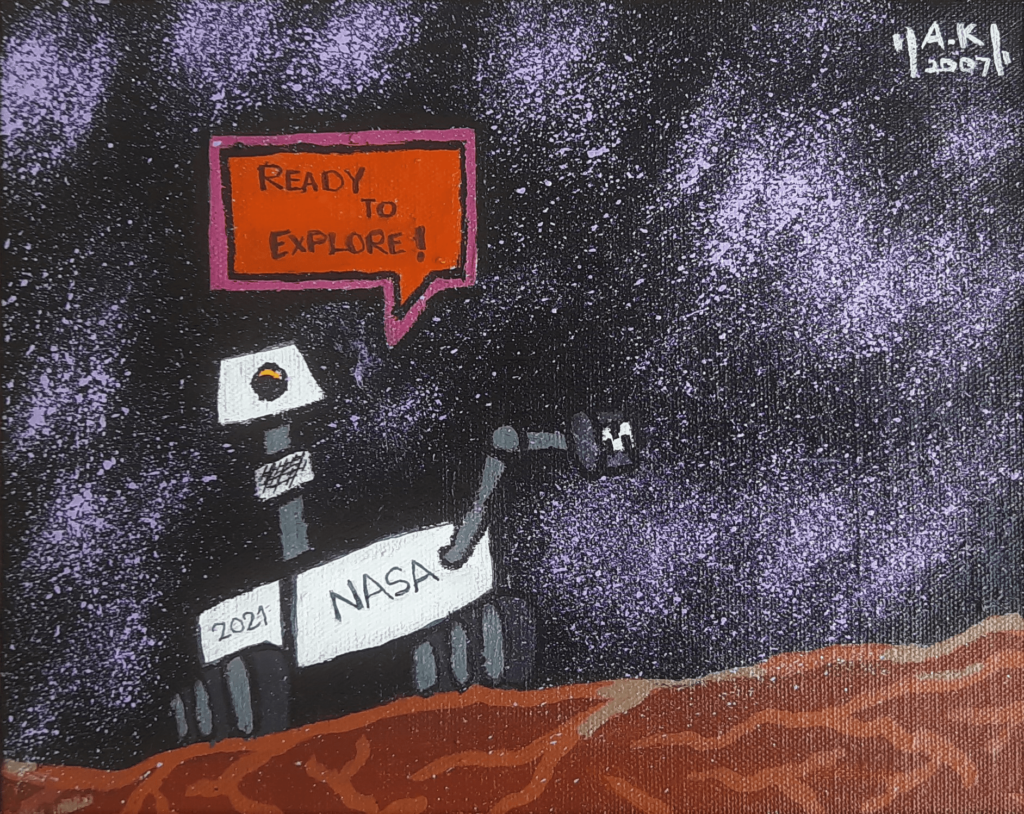THE VIRAL BULLETIN AND THE GALACTICAL HIGHLIGHT OF FEBRUARY
This was an unprecedented year with a long stretch of trials and tribulations that brought in some bright sparks of success. What many would prefer to call the ‘Doomsyear’, 2020 was probably the public health community’s worst nightmare come true. It felt like we were living on a movie set that was a hyper-realistic version of the movie ‘Contagion’. A dangerous virus emerged that spread around the world like wildfire.
Just when we thought that we had the virus around a noose, new variants of the virus started cropping up. The South African variant, 501.V2 or B.1.351, contains mutation N501Y that makes the variant more contagious. As far as we know, current vaccines are slightly less effective against this new variant. Owing to the small genetic changes that occur in the virus, the capacity of the virus to duplicate, spread and thrive also changes. Some of the vaccines are designed in a way in which the virus’s spike protein – the part that allows the virus an entry into a human cell is involved. These particular mutations are concerning. 501.V2 variant has already started to create havoc in the Eastern and Western Cape provinces of South Africa.
Covaxin™ and Covishield are on a winning streak! In India, 24.4 million shots have already been registered. Most of the front-line workers have been vaccinated. Summing up to be the largest vaccination drive, India has been successful in working against the novel coronavirus. To find out more about how these vaccines shield us against the virus, refer to our previous viral bulletin linked here – https://thescienceparadox.org/covid19-updates-o6/
COVID-19 forbade us to come together, but there was only one way to fight this virus. We decided to fight it together. The world united against the virus. We protected each other when we knew the way out of this debacle was still blur. Healthcare facilities all over the world collaborated to try out everything that they could in pursuit of rolling out a vaccine. It was a revolution of kindness.
Perseverance on Mars – NASA’s phenomenal feat.

Perseverance was launched into space on 30th July 2020. This newest robotic resident on Mars touched down inside the 28-mile-wide Jezero Crater on 18th February 2021. Perseverance is set out to find signs of ancient life and collect samples of rock and regolith.
After the Moon, Mars comes next in line to water our curiosity about the vast realms in space. Kindled with a few hundred questions, the most spotlighted one has always been the same – Did life ever arise on Mars? Curiosity, NASA’s attempt to find life on Mars around a decade ago, confirmed that around 4 billion years ago, Mars housed conditions that could have supported life as we know it.
Perseverance used Curiosity’s findings as a step-up to further search for microbial fossils. This 1-ton, 6-wheeled Mars rover is also going to look out for carbon-containing molecules called organics that are known to form the fundamental structure of Earth.
7 minutes of terror.
Perseverance landed on Mars by tweaking the terrifying ‘Seven Minutes Of Terror’. The event is referred to as EDL – entry, descent and landing phase of the rover. This event takes place faster than the reach of radio signals from Mars to Earth for communication. The Mars rover went into its landing phase starting at 03:48 PM EST on 18th February 2021. This is when the sequence for ‘Seven Minutes Of Terror’ began. The engineers at NASA were not able to guide/direct/monitor the smooth landing of Perseverance on Mars during this time due to the communication gap. The most terrifying part of this entire series was the fact that the rover landed on Mars without any human guidance.
Technological amenities.
Perseverance is well-equipped with life-seeking tools that include 2 Raman spectrometers that will help us detect organic compounds related to life as we know it. One of them is placed on the rover’s robotic arm named SHERLOC, and another inside the SuperCam. SuperCam is an instrument that can detect rocks that are quite a distance away just with the help of its laser. It is placed on the top of the rover’s mast. The best part about the rover is that it is fitted with incredibly advanced technology that can detect anything as small as the grain of salt to something as huge as a proper water body! Nestled in Perseverance’s belly is a small helicopter drone named Ingenuity. Ingenuity is going to help the scientists to explore the rover’s surroundings as a part of the 30-day flight test campaign. Scientists are also looking forward to acquiring audio recordings of the sound on the planet with the help of 2 microphones that are planted on the rover.
Getting Perseverance’s samples back to the Earth is going to require at least two more missions that are currently being planned by NASA and the European Space Agency. This 2.7 billion dollar project will help us understand the planet itself, and hopefully answer our question – Did life ever arise on Mars? We are a progressive species, and this rover’s success is going to be one of the greatest achievements for mankind.
Writer:

Urja Kuber
Co-Founder & Director of Website Development and Logistics
Illustrator:

Ahan Kuber
Ahan is an artistic 8th grader who has recently started liking SciArt. He likes to combine quirkiness and creativity with science. A passionate cyclist, Ahan loves to explore the city on his two wheels. Apart from wheels and art, he also loves to cook, bake and present! Opening a restaurant and earning a Michelin star is his biggest dream.


Very nice article Urja. Keep it up and all the best my dear..
Article well written and educative.
All the best to both of you.